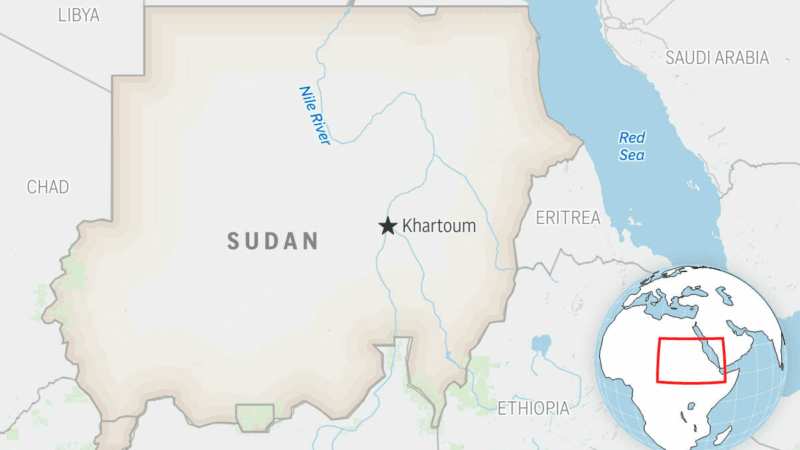How a third parent’s DNA can prevent an inherited disease
Scientists can protect children from being born with certain devastating genetic disorders by creating “three-parent” babies, according to the results of a landmark study released Wednesday.
British researchers used the experimental technique to help families have eight children who appear healthy. They now range in age from younger than 6 months to older than 2 years.
The families have been plagued for generations by rare but often fatal inherited mitochondrial disorders, according to two papers published in The New England Journal of Medicine.
The four boys and four girls, including a set of identical twins, need to be followed longer to confirm the procedure is safe and effective, the researchers say. But the results are being hailed as a milestone in the quest to harness cutting-edge genetic technologies to enable more women to have healthy babies.
“Mitochondrial disease can be devastating for the family. It can be tragic,” says Doug Turnbull, a professor of neurology who is part of the team at Newcastle University that has been developing the technique for more than a decade. “This is an important breakthrough — a big step forward.”
The research is thrilling many families, doctors and other scientists.
“I think this is a landmark advance. It is pioneering work,” says Dietrich Egli, an associate professor of developmental cell biology at Columbia University who had been advocating for lifting federal restrictions on similar research in the U.S. “It is extraordinary — no question about it.”
Worries about risks temper hopes
But some critics question the approach. They worry about risks, and whether the approach will open the door to using genetic technologies to manipulate the genes in other ways to someday create “designer babies.” Moreover, genetic changes like this can be passed down for generations. So any mistakes could introduce deleterious mutations into the human gene pool, they say.
“It’s dangerous,” says Stuart Newman, a professor of cell biology and anatomy at the New York Medical College. “It’s biologically dangerous. And then it’s dangerous culturally because it’s the beginning of biological manipulation that won’t just end with preventing certain diseases, but will blossom into a full-fledged eugenics program where genes will be manipulated to make designer babies.”
Current U.S. regulations would prevent the procedure from being used in this country to produce children. But a New York doctor reported in 2016 that he had created a three-parent baby for a Jordanian family in Mexico. Australia has legalized it. And doctors in some other countries, including Greece and Ukraine, have used the technique to try to help infertile women have babies, even though it’s unclear the method works for that purpose.
“I think it will normalize the fact that it’s appropriate to take this material and to tinker with it, all in the pursuit of the perfect baby, whatever somebody happens to think that is,” says Francois Baylis, a distinguished research professor emerita at Dalhousie University in Canada.
Defective cellular powerhouses
Mitochondrial disorders can cause serious health problems, including paralysis, heart failure, brain damage, strokes and blindness. Children born with one of these disorders often live short, painful lives. The disorders are caused by defects in mitochondrial DNA. The genetic material is the blueprint for structures called mitochondria, which provide energy to cells. This DNA is passed only from mother to child.
The fix tested by the British scientists is sometimes called “mitochondrial donation.” It involves removing the genes from the nucleus of the fertilized egg of a couple who wants to have a healthy baby. Those genes represent the majority of genetic material in eggs and are responsible for most of a person’s traits, such as their appearance. The defective mitochondrial DNA is left behind.
The genes from the nucleus of the egg are then injected into a fertilized egg from a healthy woman that has had all of its DNA removed except for the donor’s healthy mitochondrial DNA. This is called pronuclear transfer. The resulting embryo can then develop with the healthy donor mitochondria and later be implanted into the womb of the woman who wants a healthy, genetically related baby.
As a result, the baby has all the DNA responsible for the main traits of the two parents trying to have a healthy baby along with a small amount of mitochondrial DNA from the woman who donated the egg. That is why they are sometimes referred to as “three-parent” babies.
Early results are encouraging
In the new study, the babies were born to seven women at high risk of transmitting serious, disease-causing mitochondrial DNA mutations to their offspring. Their mother’s disease-causing mitochondrial DNA mutations were either undetectable or present at levels that are unlikely to cause disease, the researchers reported.
“A child with one of these conditions can be in a lot of pain, suffer all sorts of problems and die. It’s truly horrible to have to watch your child slowly die of something that bad. It’s heartbreaking,” says Robin Lovell-Badge, a developmental biologist at the Francis Crick Institute in London who wrote an editorial accompanying the papers. “So for women at risk of having children with serious mitochondrial diseases, this provides them with an option to have children without suffering. It’s very encouraging.”
“All the children are well and continue to meet their developmental milestones,” Newcastle University’s Turnbull says.
Baylis, at Dalhousie University, and others worry about risks that may not yet be apparent, to the babies themselves, the women having the babies and the women donating the eggs, such as a dangerous hyperstimulation of their ovaries.
“There are risks to the women who are going to be receiving the embryo and there are risks to the women who are the donor of the eggs that will be providing the mitochondria, Baylis says. “We don’t know the future.”
She’s also worried about putting so much importance on the need by couples to only have children with their own genes.
“What you’re seeing is this sense that, ‘My genes are very valuable. My genes are the only ones worth reproducing.’ And I think that’s always worth questioning,” Baylis says.
Women at risk of having children with a mitochondrial disorder have other options, including adoption, she argues.
Turnbull acknowledges the research remains at a relatively early stage, requiring additional follow-up research and monitoring. “The results so far are very encouraging,” he says.
Turnbull argues reproductive technologies are highly regulated in Britain and many other countries: “I think there are enough checks and balances in the system to prevent this from becoming a slippery slope to designer babies.”
Others stress that the technology is distinct from gene-editing techniques like CRISPR, which have also raised fears about designer babies.
“This is totally different,” Lovell-Badge says. “This is using a method that is avoiding a serious disease. If you care about peoples’ health, peoples’ desire to have genetically related children, then I see no reason why you should not accept these methods.”
‘The Abandons’ is a sudsy soap opera dressed up in spurs and a cowboy hat
On the surface it's a gorgeous, hardscrabble Western, awash in stark landscapes, grubby faces, bar fights and banditry. But scratch away the grime, and you expose the pure, glitzy soap opera beneath.
Sudanese paramilitary drone attack kills 50, including 33 children, doctor group says
Thursday's attack is the latest in the fighting between the paramilitary group, the Rapid Support Forces, also known as the RSF, and the Sudanese military, who have been at war for over two years.
Russia unleashes drone and missile attack on Ukraine as diplomatic talks continue
Russia unleashed a major missile and drone barrage on Ukraine overnight into Saturday, after U.S. and Ukrainian officials said they'll meet on Saturday for talks aimed at ending the war.
West Virginians question National Guard deployments after attack on 2 of their own
Army Specialist Sarah Beckstrom was fatally shot in Washington, D.C., while Air Force Staff Sergeant Andrew Wolfe was seriously wounded. Trump says the deployments are necessary to fight crime, but others disagree.
Takeaways from the latest special election and what it means for control of the House
There was yet another sign this week of a potential 2026 wave that could hand control of the House of Representatives to Democrats.
Trump official signals potential rollback of changes to census racial categories
Trump officials are reviewing changes to racial and ethnic categories that the Biden administration approved for the 2030 census and other federal government forms, a White House agency official says.






